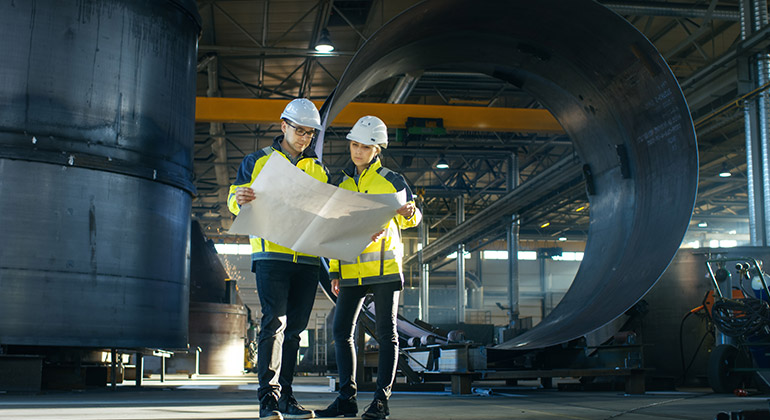Design and Documentation Services: A Comprehensive Guide to Successful Construction Projects
Design and documentation services are fundamental to the success of any construction project. These services involve creating the blueprint, plans, and technical documents necessary for the execution of a project from start to finish. Design and documentation services ensure that construction is not only feasible but also efficient, safe, and aligned with the client’s vision and local regulations. In this article, we will explore the importance of these services and how they contribute to the successful delivery of construction projects.
What are Design and Documentation Services?
Design and documentation services are the backbone of any construction project, ensuring that a vision is transformed into a reality. These services typically include the creation of architectural plans, structural designs, engineering drawings, and detailed specifications that guide contractors and workers during construction. The process includes everything from initial concept design to the final set of technical documents that will be used throughout the construction phase.
The design process involves various experts collaborating to deliver a comprehensive set of plans and documentation. Architects, engineers, contractors, and other specialists work together to ensure that the project meets the client’s expectations while adhering to safety, legal, and environmental standards.
Key Elements of Design and Documentation Services
1. Conceptual and Detailed Design At the outset, the design team works closely with the client to understand their requirements, preferences, and goals for the project. This phase involves conceptual designs, which may include sketches and basic layouts that define the building’s structure and overall appearance. Once the concept is approved, the design team will create detailed plans, which include all technical and architectural aspects required for construction. These detailed designs incorporate structural, electrical, plumbing, and mechanical systems to ensure that the building is both functional and aesthetically pleasing.
2. Architectural Design Architectural design services focus on the aesthetic and functional aspects of a project. Architects plan the layout, look, and feel of the building. They consider how spaces flow and function within the building and how to achieve the desired style while ensuring safety and accessibility. This phase includes designing floor plans, elevations, and 3D visualizations. The architect also ensures that the design complies with zoning laws, building codes, and other regulations.
3. Structural Engineering Design Structural engineers provide designs and calculations that ensure the building’s stability. They determine the materials and structural systems required to support the building, such as foundations, beams, columns, and framing. The role of structural engineers is crucial in ensuring that the building can withstand natural forces like wind, earthquakes, and snow loads. Their designs are essential in minimizing the risk of structural failure, making them a critical part of the documentation process.
4. MEP (Mechanical, Electrical, and Plumbing) Design Mechanical, electrical, and plumbing systems are integral to the building’s functionality. MEP design involves creating systems that regulate temperature, air quality, lighting, and water usage. Engineers design HVAC systems, electrical layouts, plumbing systems, fire safety systems, and more. Proper MEP design ensures efficiency, safety, and comfort within the building. It is also essential to ensure compliance with regulations related to energy efficiency and sustainability.
5. Bill of Quantities (BOQ) and Specifications Documentation services also include creating a Bill of Quantities (BOQ) and material specifications. The BOQ outlines the materials, quantities, and costs required for the construction process. This helps contractors accurately price the project and ensures that the right materials are available at the right time. Material specifications provide detailed descriptions of the materials to be used, including quality standards and compliance with environmental regulations.
6. Technical and Compliance Documentation One of the most critical aspects of design and documentation services is ensuring that the project meets all legal, environmental, and safety requirements. This includes creating documentation that verifies compliance with building codes, zoning regulations, safety standards, and environmental guidelines. These documents are crucial in obtaining the necessary permits and approvals from regulatory bodies before construction begins.
The Role of Technology in Design and Documentation
In recent years, technology has revolutionized design and documentation services. Building Information Modeling (BIM) is one of the most significant advancements in the construction industry. BIM allows architects and engineers to create 3D digital models of the entire building, enabling better collaboration, improved accuracy, and enhanced visualization. BIM also helps identify potential issues or conflicts early in the design phase, reducing costly changes and delays during construction.
Additionally, software tools for CAD (Computer-Aided Design) and CAM (Computer-Aided Manufacturing) have streamlined the process of creating detailed drawings, improving precision, and reducing errors.
The Benefits of Comprehensive Design and Documentation Services
1. Improved Project Planning Thorough design and documentation services allow for detailed planning, reducing the chances of delays or cost overruns. Accurate documentation ensures that all contractors and workers understand the scope, materials, and timeline.
2. Compliance and Safety Professional documentation ensures that the project complies with local building codes and safety regulations. This is crucial for the protection of the project, workers, and future occupants.
3. Clear Communication Detailed design and documentation provide clear communication between clients, contractors, architects, and engineers, helping to align expectations and reduce misunderstandings.
4. Cost Efficiency Well-documented plans reduce the chances of errors during construction. This reduces costly rework, material wastage, and delays, ensuring that the project remains on budget.
Conclusion
Design and documentation services are an essential component of the construction process, ensuring that the project progresses smoothly from concept to completion. These services provide the detailed plans and technical specifications needed for accurate and efficient construction. With a comprehensive approach to design, engineering, and compliance, these services ensure that buildings are safe, functional, and built to last. Embracing technology like BIM further enhances the efficiency and precision of design and documentation, ensuring that the construction project is completed successfully, on time, and within budget.





